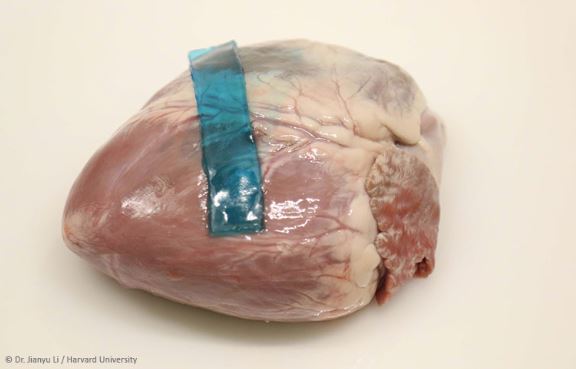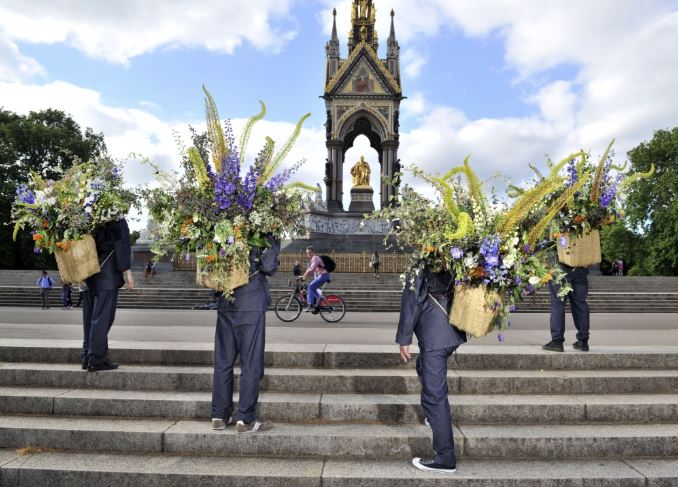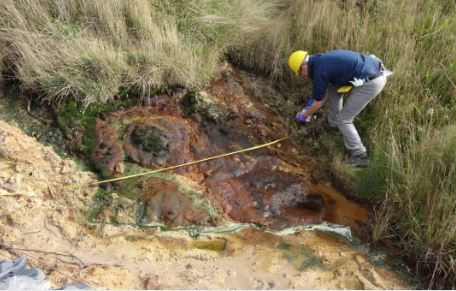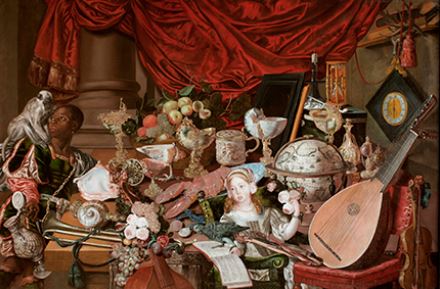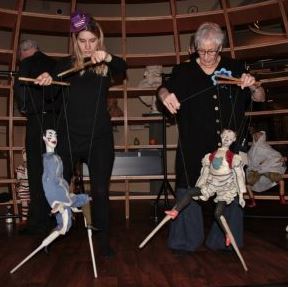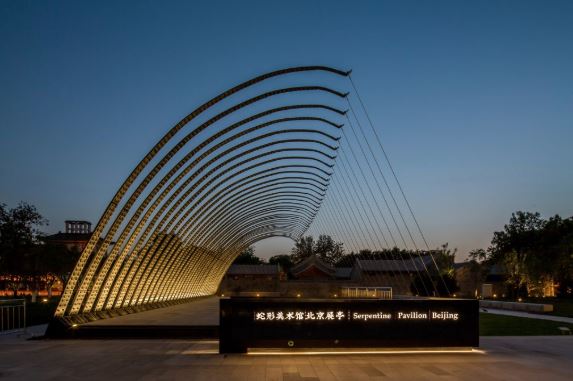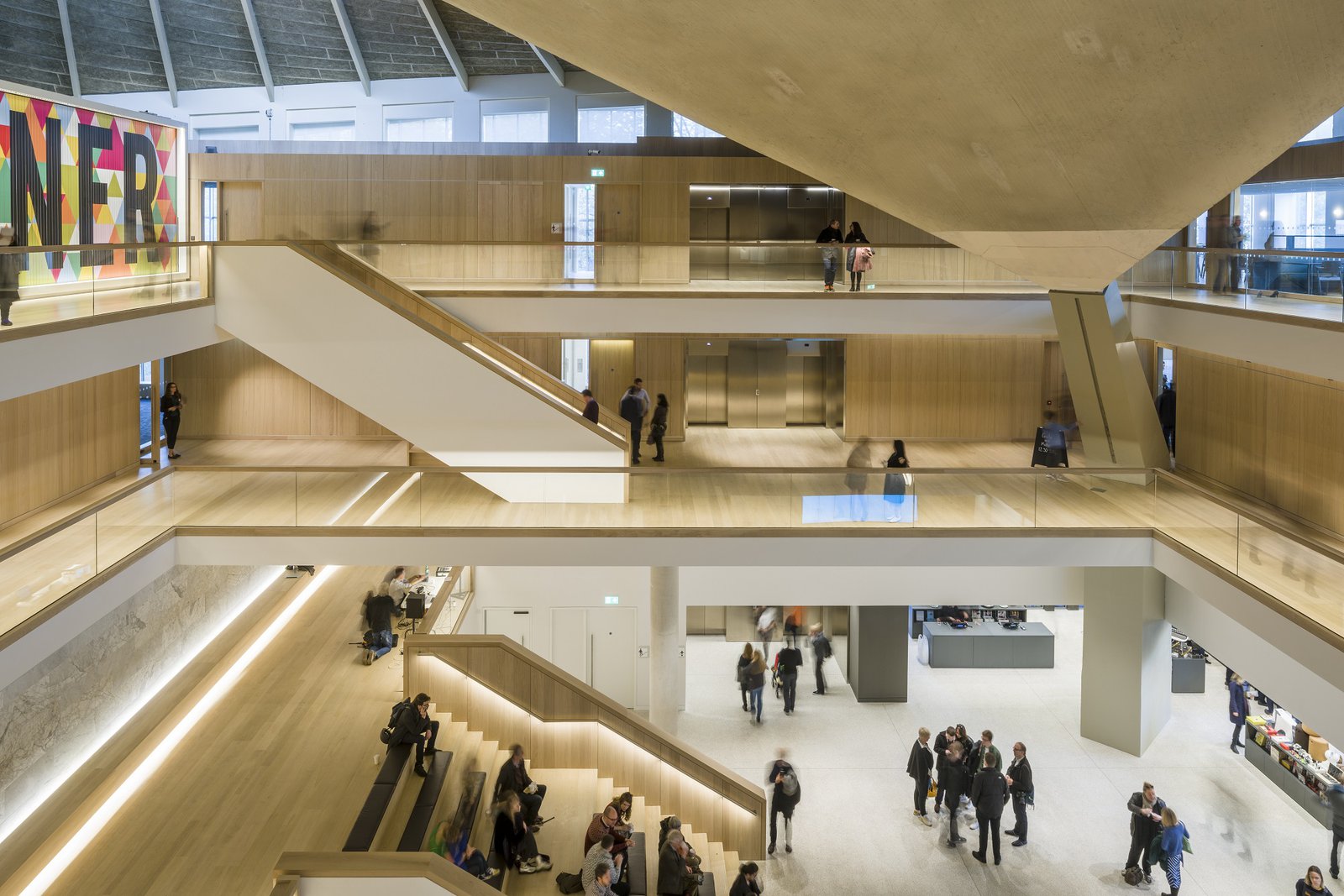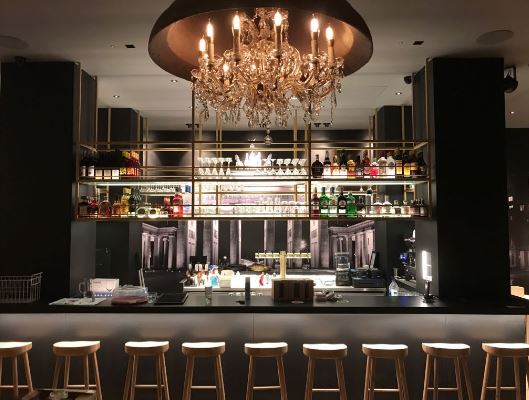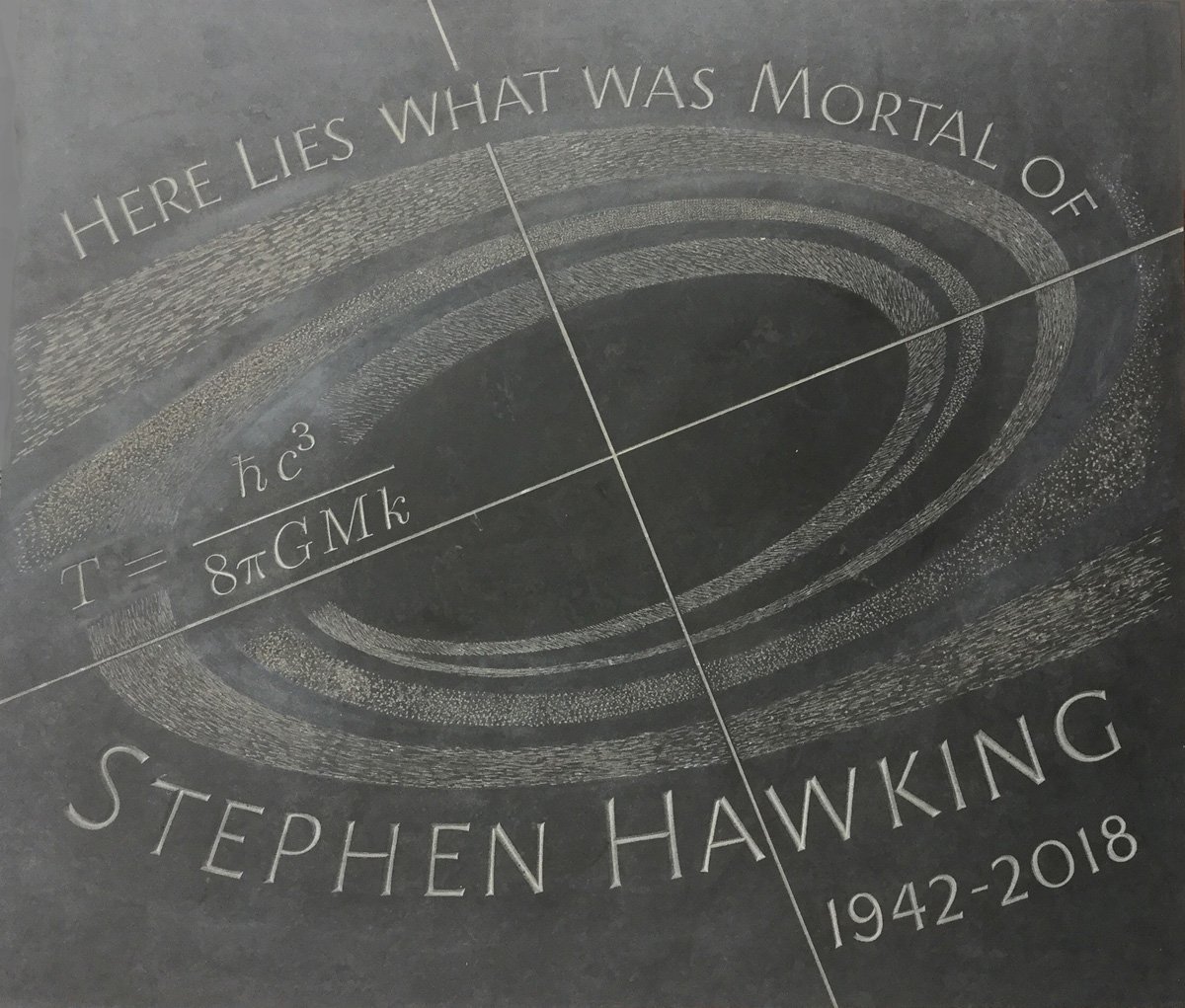
How can you mend a broken heart? Slugs. Dr Adam Celiz, a Lecturer in the Department of Bioengineering at Imperial College London, was part of the team that developed the new adhesives - inspired by the secretions of some exceptionally sticky gastropods to create a new family of adhesives that could be used to patch wounds. A key feature is how well it sticks in wet conditions. This makes tough adhesives potentially optimal for use inside the body - a challenging environment for most current medical glues. The hydrogel is also biocompatible, which means that it can be interfaced with organs and tissue without negative effects. In one trial the gel was used to patch a defect in an excised pig heart and the organ was inflated and deflated thousands of times. The seal remained intact, with no leaks throughout the test, having dynamically stretched with the pumping muscle.
Scientists from Imperial College London are teaming up with the Natural History Museum at the Royal Society's Summer Science Exhibition 2018 to help you get up-close with biomimetic research and designs.
On the 26th of March, The Royal Albert Hall hosted a screening of Suffragette with a following Q&A with the film’s producer in celebration of 100 years of women’s suffrage. 100 years ago, the Royal Albert hall was the largest meeting place in London and became the best place for the women’s suffrage societies to spread information about the latest campaigns, rouse the women to action and perhaps more importantly to raise money to spread the word through their workers and newspapers. The hall was affectionately named as a ‘Temple of Liberty’ by the Suffragettes during this time, hosting 25 huge women’s suffrage meetings during the movement. In March 1918, Emmeline Pankhurst and her daughter returned to the Hall to celebrate women getting the vote for the first time.
Japan House opened on Kensington High Street on the 22nd of June 2018. In celebration of the opening flower artist and botanical sculptor AZUMA Makoto, in collaboration with London Flower School, created a version of Flower Messenger especially for the streets of London. Inspired by flower sellers during Japan’s Edo period (1603-1867), a troupe of thirty flower messengers visited Kensington’s cultural institutions, including the Design Museum, the Natural History Museum, Royal Albert Hall and the Serpentine Gallery, on foot to meet their neighbours. Along the way, they greeted passers-by and presented them with flowers. The Flower Messengers carried baskets of elaborate flower displays and wearing uniforms inspired by the clothes worn by Edo period flower sellers, but revamped for the 21st century by one of the top denim makers in Japan.
It was reported on the 15th May 2018 that Dorset, UK, is to be used as a model for finding life traces on Mars. Dorset is home to highly acidic sulphur streams that host bacteria that thrive in extreme conditions. One such environment, in St Oswald’s Bay, mimics the conditions on Mars billions of years ago. Now, scientists from Imperial College London have found ancient traces of fatty acids - key building blocks of biological cells – in Dorset’s acidic streams. The authors say that if we do find traces of life, it will probably be in the form bacteria that can thrive in extreme environments - like those found in Dorset's acid streams.
This year’s Journey of a Lifetime Award, run by the Society in partnership with BBC Radio 4, is supporting Paralympic champion Karen Darke MBE as she handcycles the course of Australia’s longest river, the Murray. Fresh from competing for Team Scotland in the 2018 Commonwealth Games, Karen’s journey is now underway. Beginning in the Australian Alps, her 1,500km route will follow the Murray River through the states of New South Wales, Victoria and South Australia all the way to Lake Alexandrina where the river runs into the Southern Ocean. Along the way, Karen will experience a variety of environments, including the Snowy Mountains, the ancient landscapes of Mungo National Park, and the River Red Gum.
In April 2018, The Royal College of Music made the first ever recording of a song by Robert Ramsey after its manuscript was discovered in a mysterious 17th century painting. Scholars identified a detail from The Paston Treasure, an oil painting by an unknown artist as Robert Ramsey’s ‘Charon, O Charon heare a wretch opprest’, written circa 1630. The painted manuscript is so accurate that Professor Jo Wainwright of the University of York was able to reconstruct the whole piece from the only existing physical copy, held in Oxford’s Bodleian Library.
In May of 2018, The V&A invited Rachel Warr, to use a number of puppets in the V&A’s collection that haven’t been touched in decades. Warr is a part of one of the Design Clusters teams, which are made up of creative individuals using different kinds of arts practices to investigate embodied knowledge. There are a few puppets on display in the Theatre and Performance galleries but most of them are kept in storage, unable to fulfil their function in performance. The puppets used were originally a part of a Victorian Travelling marionette group. They are an important part of this country’s puppetry history and heritage. There is only a small amount of work with sting marionettes currently taking place in the UK. It could be argued that the English tradition of string marionettes is in danger of dying out. There was an exchange of knowledge and skills. It was very exciting to then get these puppets up on their feet and bring them to life again. Puppets are designed for movement, the static look of them of course is important, but it is when they are moving that their character and their purpose truly emerge.
On June 6th 2018, the first Serpentine Pavilion built outside the UK was completed by Chinese Studio Jiakun Architects in Beijing. The Serpentine Pavilion Beijing opened in the Chinese capital last week, marking the first time the pavilion has been located somewhere other than Kensington Gardens in London. It comprises a series of long, slender steel beams that are each stretched into the form of an arch by steel cables. Jiakun Architects, led by architect Liu Jiakun, wanted the structure to resemble the figure of an archer, in reference to the teachings of Confucianism – a Chinese philosophy that rejects the practice of all martial arts except archery.
Alongside the opening in Beijing, another ‘first’ has taken place in Hyde Park’s Serpentine this year. Selected Architect Frida Escobedo is officially the youngest chosen architect for the Serpentine’s Summer Pavilion design. At the age of 38, Escobedo’s design harnesses a subtle interplay of light, water and geometry, her atmospheric courtyard-based design draws on both the domestic architecture of Mexico and British materials and history, specifically the Prime Meridian line at London’s Royal Observatory in Greenwich.
The Ismaili Community is commemorating 60 years since His Highness the Aga Khan became the 49th hereditary Imam of the Shia Ismaili Muslims on 11 July 1957. There have been a series of commemorative events in London and around the world.
On the 26th of June the Aga Khan centre was opened by HRH The Prince of Wales in the presence of Mawlana Hazar Imam. The Aga Khan Centre, designed by Maki and Associates, led by Fumihiko Maki, one of the world’s most distinguished contemporary architects, provides a new home for a number of UK based organisations founded by Mawlana Hazar Imam. The institutions have been operating in the UK for many years and are part of a mission and mandate to increase knowledge and understanding of Muslim civilisations and help improve the quality of life for people around the world. It is situated in King’s cross, London’s knowledge quarter, and will be a site for cultural exchange, education and insight into Muslim civilisations.
The Design Museum recently won the European Museum of the Year Award 2018. This makes it the seventh British winner in the 41-year history of the prize. This year it also welcomed its one-millionth visitor in its new site in South Kensington, after relocating from its original home in what used to be a banana-ripening warehouse near Tower Bridge. The judging panel had this to say about the museum: “Without losing its identity, this museum was able to renew and strengthen its public values, reopening with a wide range of new exhibitions along with an intense program of activities, providing an impressive and memorable experience for its visitors of all ages, achieving accessibility of the highest quality. It sets its collections in the context of global technological and cultural knowledge, providing a high level of interactivity, establishing an important democratic and multi-layered intercultural dialogue, with a significant social impact in the community.”
The Goethe Institut just opened their new café-restaurant Stein’s Berlin. Kicking off on opening night with a screening of Germany’s first match in the World Cup, this café-restaurant celebrates the best of German cuisine accompanied by an interior almost entirely imported from Germany, handsomely displayed by the grand bell at the entrance in the photo on the right. Situated right on Exhibition Road next to the Institut, this modern contemporary restaurant has been placed inside a Grade 2 listed building, featuring a terrace that overlooks the Princes Gardens.
Science Museum Fellow Lord Martin Rees gave a speech in remembrance of Stephen Hawking at the Service of Thanksgiving. The two scientists met as post-graduate students at Cambridge, just at the time that Prof Hawking was diagnosed with a degenerative disease, informed that he may not survive past his PhD. After this diagnosis, his expectations dropped to zero. He later said that everything that happened afterwards was a bonus. And what a triumph his life has been. Back in 2012, the museum celebrated Stephen Hawking’s 70th birthday with an exhibit, and made him a Fellow. He visited the museum many times over his lifetime, describing the Science Museum as ‘one of my favourite places’.
On Wednesday 6th June, Charlie Fegan was the first ever winner of the exciting new Royal Society of Sculptors Bronze Award. The award is a new scheme that grants graduating students from the Royal Academy a three to six month residency at Milwyn Casting, a Fine Art Foundry based in Leatherhead, along with up to £3000 of materials. Fegan’s work involves moving image, sculpture, digital image and altered environments that work to reframe historical events and visual records. The Royal Society was originally established to advocate sculpture and the artists who created it- so encouraging and helping young artists via this brand new award is fitting with the Society’s historical purpose.
Artist Christo unveiled his new piece ‘The London Mastaba’ situated on The Serpentine. The piece is 66 feet tall, weighs 600 tonnes, and is here to stay for the summer of 2018. The project cost £3 million and is names after a flat-roofed structure with sloping sides that originated some 6,000 years ago in Mesopotamia (the word “mastaba” means “eternal house" in Ancient Egyptian), it is a test for a mastaba roughly eight times as high that Christo hopes to put up in the desert in Abu Dhabi.
